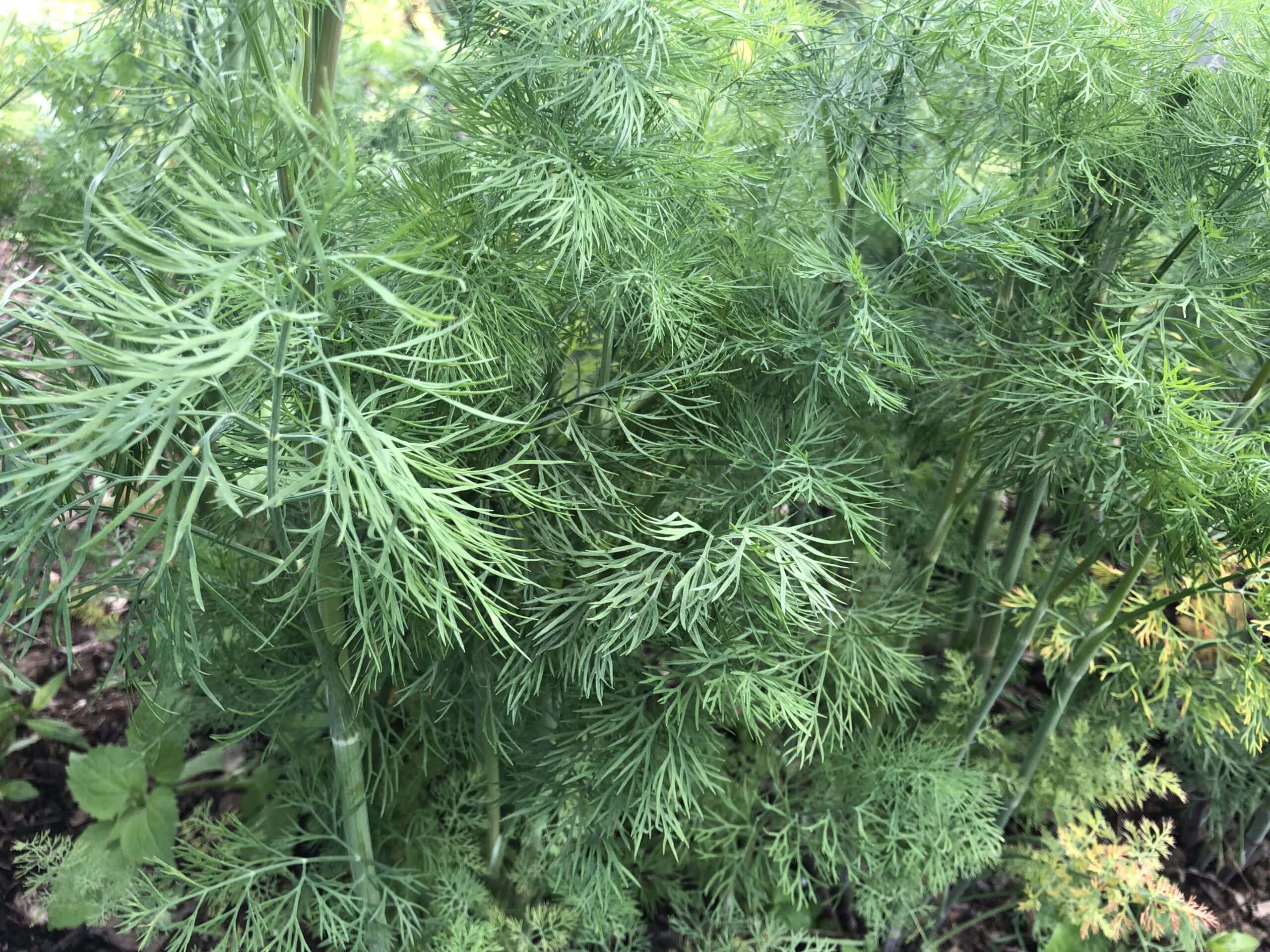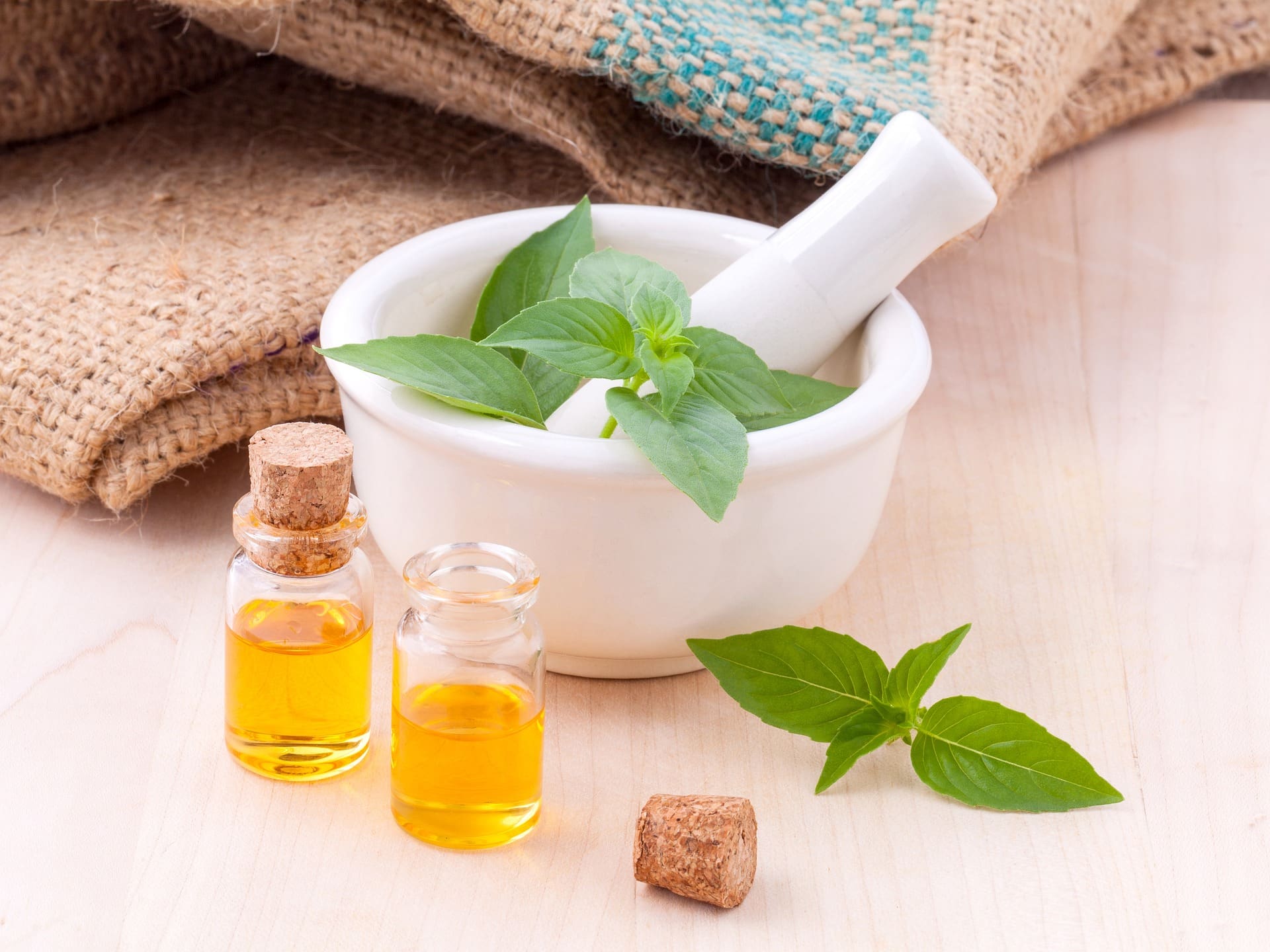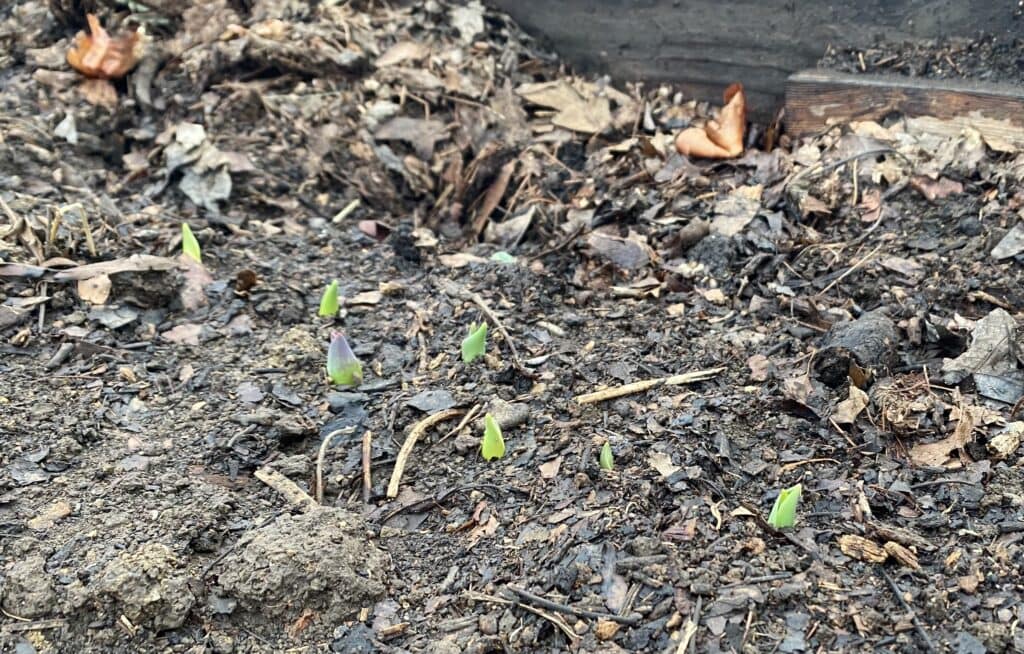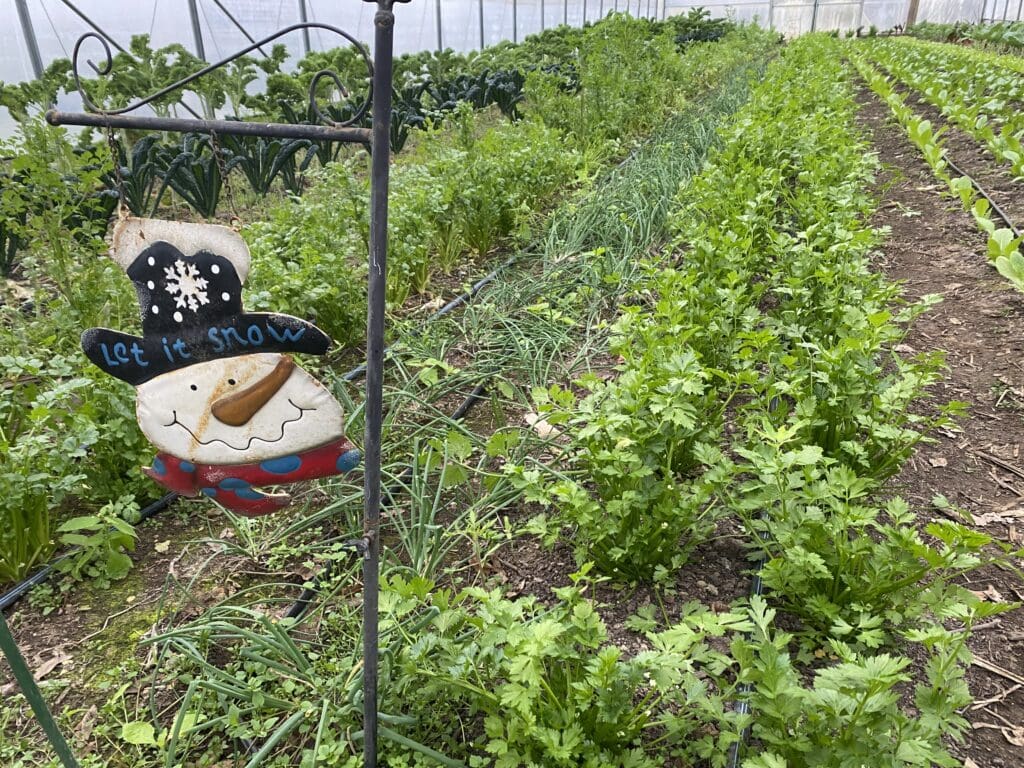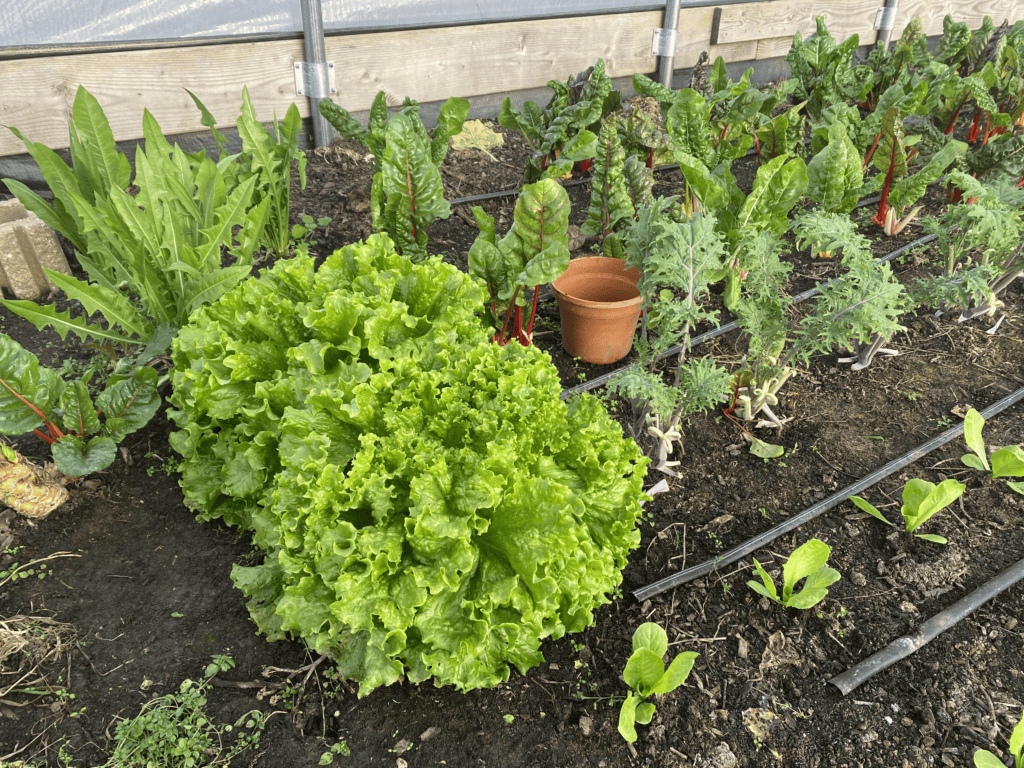This post may contain affiliate links. Probably doesn’t, but it might. It doesn’t cost you anything extra but if you use these links to buy something, we may earn a commission.
Here is how the farmer grows basil
It is frustrating when your basil plant starts to die. You want those flavorful leaves for your favorite recipes. What to do about this? Here are some tricks that we have learned through growing basil here on our family farm.
First, let’s look at indoor basil versus outdoor basil.
Your basil that is kept indoors is susceptible to three primary problems: water, sunlight, and aphids.
Your basil that is grown outdoors is susceptible to three primary problems: water, sunlight, and temperature.
You can see that water issues are common to both, so let’s start there. Water is the usual culprit for why your basil has problems.
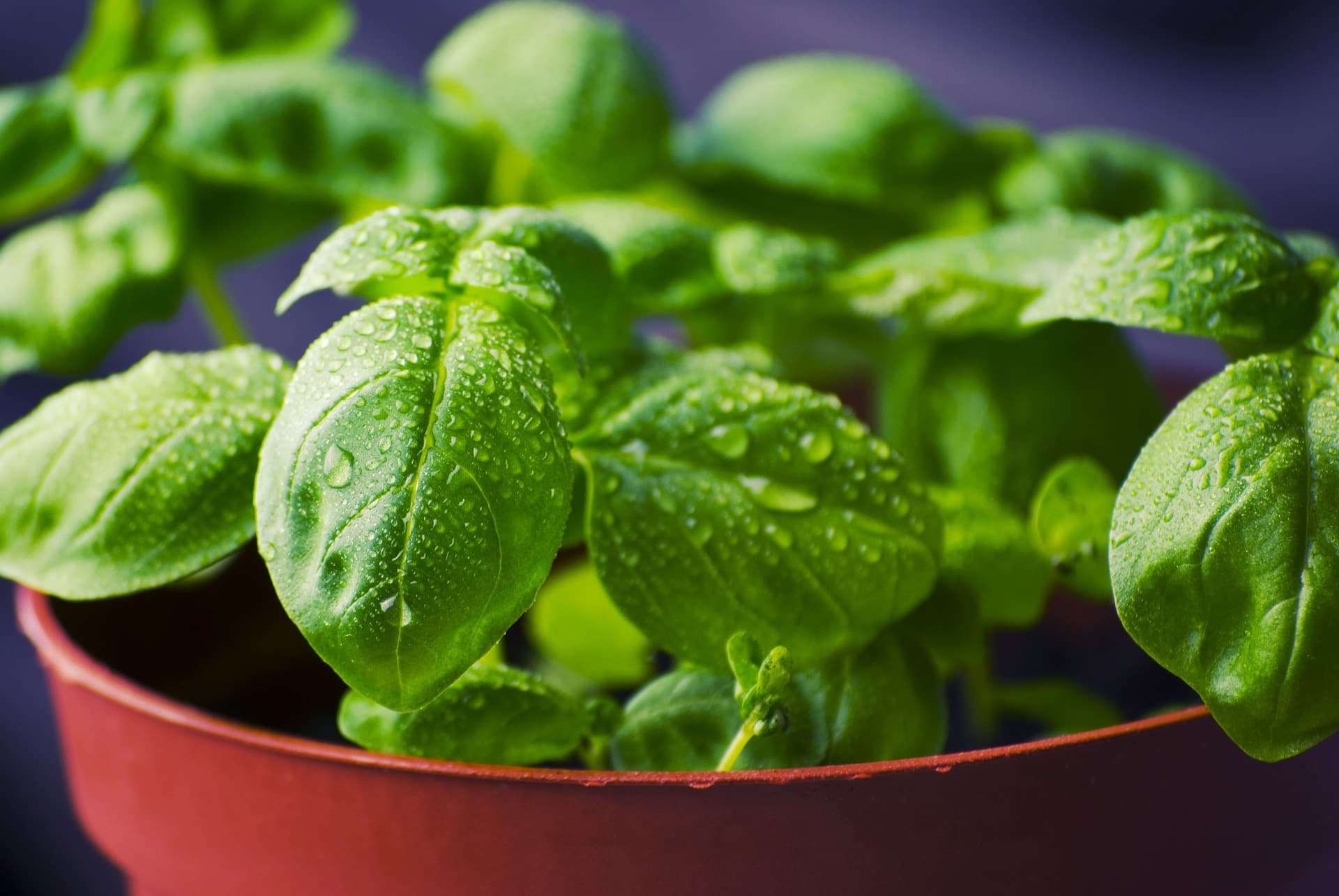
Basil wants water, but not too much water. The roots need to breathe in-between waterings. Overwatering is the #1 problem with basil. I know, you are trying to be a good plant parent and give your basil enough water. You need to allow the plant to dry out in-between waterings.
There are three considerations about water for basil:
1) For house basil, unless the temperatures are getting really hot—over 85 F—then you do not need to water more than twice each week. Check the soil with your fingertip. If it is still damp, then wait. For basil plants outside in containers, as the temperatures climb, you need to water more frequently, up to daily in very hot weather. In the ground, basil may need watering twice each week. Signs of too much water are yellow leaves or leaves dropping off. Sometimes the stem will start to turn black. Stop watering until the soil dries out. If the stem turns black, the plant usually will not recover. Better to start some more basil.
2) Basil does not like water on its leaves. Whenever you water, make sure the water is at the root level. Water directly on the soil and not on the leaves. The plant absorbs water through its roots and transmits water through the stem to its leaves. Water on the leaves can cause black spots and black tips. If your plants are outside in containers, consider moving them under cover for any predicted thunderstorms or prolonged rain storms. If your plants are in the ground, as long as they have sufficient space for the water to dry out, they will be fine. If it is an extra rainy year, then the basil will not do well.
3) If the leaves are limp and wilted, then your plant wants more water. This is easy to fix. Water the soil at the base of the plant. The water may run through the pot and immediately come out of the drainage holes. If you have a tray under the pot, let it hold the excess water. The soil will wick the water up from the bottom to the roots. Wait for about 30-60 minutes. You should see the leaves perk up. If not, water again.
If you have basil in the house, you want to place it in the sunniest, warmest place possible. Basil thrives on sun up to sun down sunlight. You want this herb to have at least six hours of direct sun each day. A porch, sun room, or southeast facing window will suit your basil quite well. Outside, you want to place your basil in the sunniest spot you can (where you still have access to water!).
Now, temperature. Basil loves hot weather! The hotter, the better. So far, we have not found an upper limit. We grow basil in one of our tunnels (a greenhouse where you can plant in the ground) in the summer, and temperatures can hit 120. The basil is very happy!
However, basil hates cold weather. Under 60 and it stops growing. Under 50 and it starts looking unhappy. Under 40? The end.
I’m guessing your house is warmer than 50, so cool temperatures are less of an issue. As the seasons change, be certain that the window providing that precious sunlight is not transmitting chill to your basil. You may need to relocate your plant to a warmer, sunnier spot.
Aphids on your basil? We see these pests as the weather gets cooler and there are more gray days. Heat and sunlight help keep aphids away. If you have one or two plants, wipe each leave carefully with a paper towel to remove all of the eggs on the underside of the leaves. Most of the sprays are contact sprays, meaning you need to make contact with the insect to get rid of it. The sad truth is, once you see aphids, they are extremely difficult to get rid of until you get rid of the plants.
You can use a liquid soap spray, with one part liquid soap to 10 parts water, to spray the basil, as a way to get rid of the aphids. I know, this is contrary to what I said about getting the leaves wet. You want to make sure that the leaves can dry completely. Use a light fan if needed.
Wash your basil carefully before using if you have used any sprays or if there are aphids. Pat the leaves dry and use as usual.
Here on the farm, we grow basil in our heated tunnel March through December. Often, we see aphids show up the last couple of weeks of December, and we know it’s time to bid the plants farewell. We start new seeds and have more basil growing by March. The gray days of January and early February in our growing zone 7 are not conducive to growing sun-loving basil. If you have more sun in your area, you most likely will be able to keep basil going longer in the winter than we can. January is when I am envious of my friends in zones 8 and 9.
As the plant gets older, the flavor changes. We find that fresh plantings of basil keep us supplied with the flavor that we want. We start basil three to four times each year. It’s always fun to see how long we can keep the basil going.
If this has been helpful, check out our courses. Growing something in the garden is good for you! We share how we grow on the farm in these courses.

